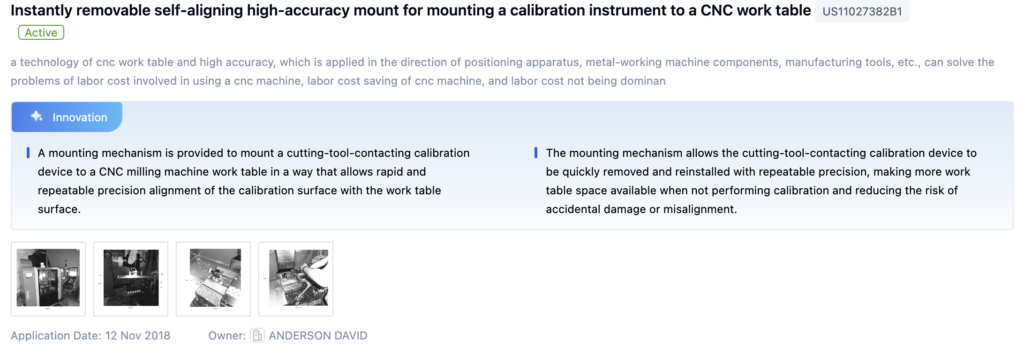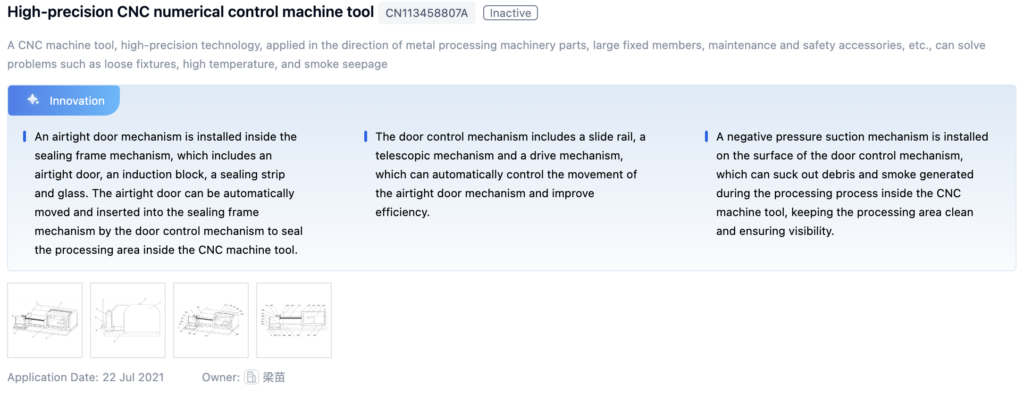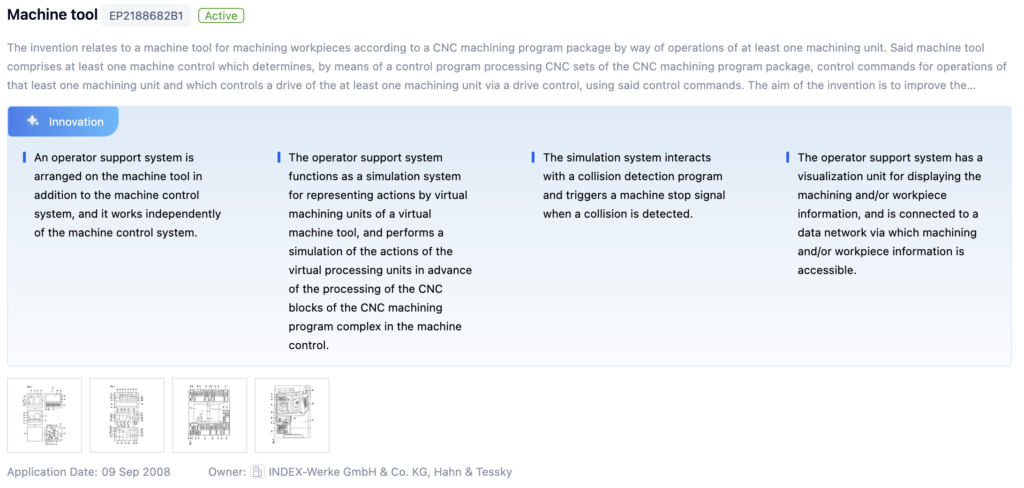
Technical Background and Objectives
Background
In the field of CNC (Computer Numerical Control) machine tools, improving machining accuracy is crucial to enhance manufacturing precision and product quality. The data shows a steady upward trend in patent applications, indicating continuous focus and growing interest in developing technologies to improve CNC machining accuracy. While patent filings reflect sustained innovation, related literature initially shows fluctuations, with a notable increase in recent years, suggesting a surge in academic research and theoretical studies. This complementary nature of practical innovations and theoretical research highlights the industry’s focus on high-precision manufacturing.

Objectives
The primary objective is to enhance CNC machining accuracy by developing innovative solutions that address factors contributing to inaccuracies. The goal is to significantly improve precision and repeatability in CNC operations, benefiting various industries such as aerospace, automotive, and precision engineering.
To get a detailed scientific explanations of CNC Machine Tool Improve Machining Accuracy, try Eureka.
Technical Current Status Analysis
CNC Machine Tools
CNC machine tools are essential in various manufacturing industries, capable of producing complex parts with high accuracy and repeatability.
Industry-Specific Applications and Impact:
- Automotive: Production of engine components, transmission parts, and body panels. High machining accuracy ensures proper fit, performance, and durability.
- Aerospace: Manufacturing critical components like turbine blades, structural parts, and landing gear. High accuracy meets stringent standards and ensures safety.
- Mold Making: Producing intricate mold cavities and cores for applications like injection molding. Improved accuracy reduces post-processing needs and enhances product quality.
- Precision Machinery: Manufacturing components for medical devices and scientific instruments. High accuracy ensures reliable performance and meets quality standards.
Technical Characteristics and Challenges:
- Machine Tool Geometry and Structural Rigidity: Geometric accuracy and rigidity affect machining accuracy. Factors like spindle runout and thermal deformations introduce errors.
- Cutting Tool Performance and Wear: Tool wear and vibrations impact accuracy and surface finish. Advanced tool materials and geometries can mitigate these issues.
- Workpiece Positioning and Fixturing: Accurate positioning and secure fixturing are essential. Errors in setup or clamping lead to deviations.
- Machining Parameters and Process Optimization: Optimizing parameters reduces vibrations and deflections. Advanced monitoring and control systems help optimize parameters in real-time.
- Environmental Factors: Temperature fluctuations, vibrations, and coolant contamination affect accuracy. Effective control measures are crucial.
Technological Paths:
- Machine Tool Design and Construction: Advanced designs with improved rigidity, geometric accuracy, and thermal stability.
- Cutting Tool Technology: Research on advanced materials, coatings, and geometries to improve performance and reduce wear.
- Workpiece Positioning and Fixturing Systems: Advanced systems for accurate and repeatable setup.
- Process Monitoring and Control: Real-time error detection and compensation using sensor technology and adaptive control strategies.
- Environmental Control and Monitoring: Stable conditions with advanced monitoring systems.
- Simulation and Modeling: Predictive simulations for process optimization.
- Integration and Automation: Advanced automation for streamlined processes and reduced errors.

Research Content
Research Objectives
Enhance CNC machining accuracy by addressing factors contributing to inaccuracies, aiming for significant improvements in precision and repeatability.
Research Direction and Focus
Machine Kinematics and Dynamics
- Analyze machine kinematics and dynamics to identify inaccuracy sources.
- Investigate thermal deformations, vibrations, backlash, and geometric errors using advanced modeling techniques and simulations.
Control Systems and Algorithms
- Develop advanced control systems and algorithms for enhanced accuracy.
- Implement adaptive control strategies, real-time error compensation, and intelligent algorithms for dynamic adjustments.
- Explore machine learning and AI methodologies for optimized control algorithms.
Metrology and Calibration Techniques
- Investigate novel metrology approaches like in-process measurement systems and laser interferometry.
- Develop real-time monitoring and compensation techniques for machining errors.
Technical Development Roadmap
Key Areas of Advancement
- High-Speed and High-Precision Motion Control: Direct drive motor technology, linear motor technology, and machine vision integration for error compensation.
- Advanced CNC Software and Programming: AI and machine learning for optimization, cloud-based programming for remote access and collaboration.
- Additive Manufacturing and Hybrid CNC Systems: Combining additive and subtractive processes for complex geometries and multi-material manufacturing.

Main Player Analysis
Key Players and Focus
- Xi’an Jiaotong University: Research on thermal characteristic optimization, error prediction, and compensation for enhanced accuracy.
- Huazhong University of Science & Technology: 469 patents focusing on error compensation, thermal modeling, and advanced control strategies.
- Chengdu Aircraft Industrial Group Co. Ltd.: 404 patents related to CNC accuracy for aerospace manufacturing, focusing on error compensation and advanced control.
- Dalian University of Technology: 419 patents on error modeling, compensation, and advanced control strategies.
- Shanghai Jiao Tong University: Research on kinematic and thermal error modeling, deep learning techniques, and data-driven control strategies.
Current Technical Solution Overview
Geometric Error Measurement and Compensation
- Measurement Methods: Multi-station measurement with laser trackers, multi-axis laser interferometers, and on-machine techniques.
- Compensation Techniques: Error modeling, parameter identification, and real-time compensation algorithms considering thermal and dynamic effects.
- Integrated Systems: Hardware and software solutions for comprehensive error management.
- Sensitivity Analysis and Robustness Evaluation: Analyzing machining accuracy sensitivity and robustness.
Thermal Error Compensation
- Software Methods: Algorithms analyzing temperature changes and machining parameters for compensation.
- Thermal-Mechanical Modeling: Modeling heat generation and thermal expansion for compensation strategies.
- Real-Time Sensing: Sensors for real-time thermal error detection and adjustment.
- Prediction Models: Analytical models and simulations for thermal behavior prediction.
- Design-Based Compensation: Features or components minimizing thermal errors.
Tool Condition Monitoring and Adjustment
- Real-Time Monitoring: Analyzing sensor data for tool condition.
- Accuracy Diagnosis and Adjustment: Analyzing errors for accuracy improvements.
- Adaptive Condition Selection: Real-time parameter adjustment based on monitoring.
- Stability and Chatter Monitoring: Monitoring stability and chatter for parameter adjustments.
Machine Calibration and Error Correction
- Calibration Methods: Laser interferometry, error mapping, and calibration techniques.
- Accuracy Prediction and Diagnosis: Predicting accuracy and diagnosing errors.
- Error Compensation Methods: Software algorithms and real-time adjustments.
- Specific Process Calibration: Methods for specific processes like grinding and laser machining.
- Machine Learning Approaches: Data analysis for calibration accuracy.
Intelligent Control and Optimization
- Control Systems: Advanced algorithms and sensor data for optimization.
- Thermal Error Compensation: Monitoring, modeling, and compensating thermal errors.
- Geometric Error Modeling: Identifying and modeling geometric errors for calibration.
- Accuracy Prediction with Machine Learning: Analyzing factors for accuracy prediction.
- Tool Management and Monitoring: Ensuring optimal tool conditions and minimizing errors.
Key Patent Interpretation
Patent Highlights
Patent 1: Instantly Removable Self-Aligning High-Accuracy Mount for CNC Work Table
- Core Invention Points:
- A mounting mechanism for precision alignment of calibration devices with the work table.
- Allows quick removal and reinstallation, optimizing workspace and reducing misalignment risks.

Patent 2: High-Precision CNC Numerical Control Machine Tool
- Core Invention Points:
- An airtight door mechanism for sealing the processing area.
- Automatic control for door movement and debris management, improving efficiency and cleanliness.

Patent 3: Machine Tool with Operator Support System
- Core Invention Points:
- An operator support system working independently from the machine control.
- Simulation system for virtual machining and collision detection, improving operator information and safety.

Possible Research Directions
- Thermal Error Compensation for CNC Machines: Using sensors, finite element analysis, and machine learning to model and compensate for thermal errors.
- Geometric Error Measurement and Compensation: Techniques like laser interferometry and ballbar testing to measure and compensate for geometric errors.
- Tool Condition Monitoring and Compensation: Sensor-based systems for real-time tool condition monitoring and parameter adjustment.
- Adaptive Control and Optimization Strategies: Real-time feedback and adaptive control for improved accuracy and stability.
- Integrated Machine Tool Design and Calibration: Ensuring high accuracy through structural rigidity, alignment, and regular calibration.
If you want an in-depth research or a technical report, you can always get what you want in Eureka Technical Research. Try now!

